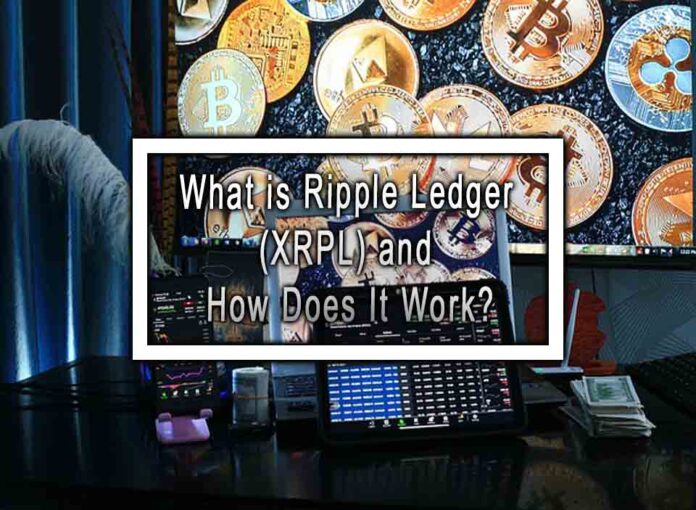The Ripple Ledger (XRPL) utilises a different mechanism to validate transactions than other blockchains. Its consensus protocol is faster than other blockchains like Ethereum or Bitcoin.
Unlike the conventional validation protocol, the XRP blockchain does not require mining or immutability confirmation to validate transactions, making network processing much faster and more efficient.
Let’s discover how this blockchain works and what makes it unique.
Understanding
XRP – Ripple – is a cryptocurrency created in 2011 by Jed McCalebm, Arthur Britto, David Schwartz, and Chris Larsen, a group of Engineers who aimed to develop cryptocurrency on the premise of Bitcoin while minimising the waste of the mining procedure.
The group established Ripple Labs, which developed the whole ecosystem, including XRP ledger, blockchain, and token. XRPL was launched in 2012, with the XRP as its native token.
Functionality
XRP works as the central currency and the bridge between different XRPL accounts, transmitting XRPs between each other while keeping a minimum supply of the tokens in circulation.
XRP token also serves as an intermediary between orders book, deployed by the auto-bridging mechanism. It is also available in several XRPL tools like Escrows and payment channels, increasing the tokens’ supply.
The tokens are stored in the XRPL data structure within the AccountRoot, and every account must maintain a minimum of tokens to minimise the costs of managing the ledger.
Similar to transactions in other blockchains, transactions are processed in blocks (dubbed ledger versions or ledgers), and each ledger is identified with a number called the ledger index.
Each transaction block is built on a previous ledger version with a lower index number, creating a chain of transactions like a typical blockchain. The XRP blockchain transaction entails updating the current status of all transactions without needing to revise the whole chain to understand the transaction process.
Thus, the XRPL consensus mechanism includes approving a list of transactions that are installed on the next ledger version and validating them according to a set of rules. Once these transactions are verified, the ledger version is considered updated and final, including previous related transactions.
How Does XRPL Consensus Protocol Happen?
Similar to other blockchains’ consensus protocols, transactions are approved collectively in a decentralised system, the nation of decentralised finance and blockchain ledgers.
The same applies to the XRP blockchain as well; the ledger carries rules that all network users agree upon and follow a unified system and events in concluding the transactions.
However, the XRPL consensus protocol slightly differs from other validation protocols by the following characteristics:
- If several malicious or misbehaving nodes take part in the consensus, the network will not validate the transaction and will stop the transaction to avoid confirming invalid transactions.
- Every XRP Ledger account has the right to confirm the current ledger version status and agree on the following ledger version.
- Validating transactions in the XRPL blockchain does not require significant resources and energy waster like in traditional blockchains like Bitcoin.
- The ledger does not rely on single participants. XRPL operations continue even if some members leave or join the ledger.
Therefore, the XRPL consensus protocol promotes three main concepts: correctness, forward progress, and agreement.
Challenges
The main challenge the XRPL faces today is the order of transactions. Since accounts approve a list of transactions ordered based on which transaction happened first, disputes may arise from which transaction occurred first and which one to validate first.
Especially if multiple transactions happen and are transmitted at the same time, which may require a central authority to control the flow of transactions and have the final say on which transaction occurred first.
However, this contradicts the concept of decentralised finance and blockchain, which removes the need for centralised authority.
Conclusion
XRP is the native token and cryptocurrency of the XRPL, which promotes faster and more efficient transactions with minimum waste. Ripple is used in many Web 3.0 applications and DEX platforms due to the low transaction fees the XRP token incurs.
XRPL validation process works slightly differently than other blockchains. New transactions are processed in blocks which are built on previous ones, updating previous and adding new block versions that all participating ledger accounts agree upon, making the network faster and more efficient.










